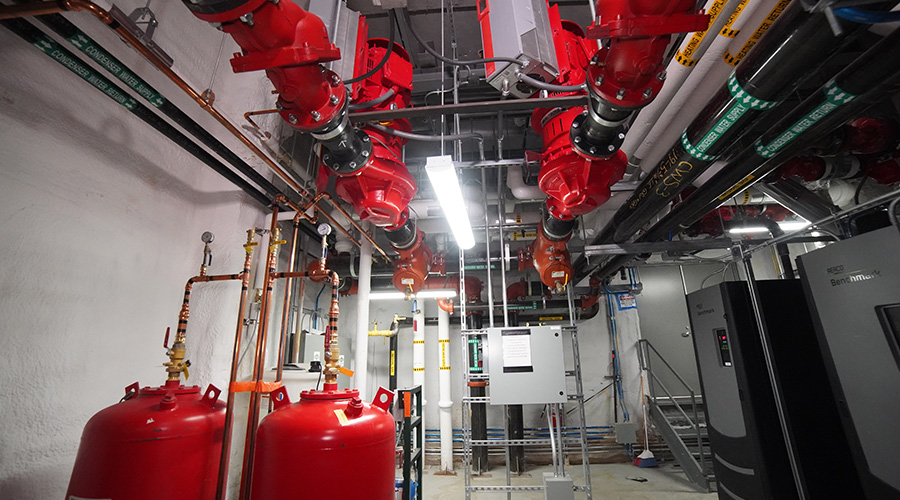Optimizing Air Handler Operations And Chiller Parasitic Loads
Air handling systems and parasitic loads should not be overlooked in the pursuit for energy optimization strategies.
Ensuring that air handling systems are operating efficiently can have a major effect on chiller plant operation and proper delta T. Air handlers with chilled water coils are designed with a specific delta T at which they must operate for maximum efficiency. Again, it is not uncommon to find air handling systems operating at much lower delta Ts than intended. This can occur when an operator manually adjusts the supply air temperature too quickly to resolve an immediate comfort problem. When the set point is fixed too low, the cooling valve opens to 100 percent flow to the cooling coil, but the new set point can never be achieved. Even a modest change to a supply air set point of 3 degrees F can double the amount of flow through the coil. The result of this high flow can decrease the delta T at the plant.
Supply air set points that are operating properly based on design are seldom the source of comfort issues. Whenever a comfort issue is encountered, first check other areas such as terminal box operation, clogged filters/coils, duct integrity, and actual fan operation before lowering the supply air temperature. Properly functioning airside systems will benefit the efficiency of the chiller plant operation.
Parasitic Loads
In addition to the issues raised above, other challenges can arise that affect the ability to achieve design delta T. For example, uncontrolled, non-HVAC (parasitic) chilled water loads can also contribute to a low delta T in the chiller plant. For example, many larger hotels have refrigeration racks and ice machines served by the chilled water system for their condenser loop. These loads do not require water temperature as low as the chilled water system, as they can effectively work off of higher water temperatures. The key is sufficient water flow, which is critical to the proper operation of the racks and ice machines.
With this uncontrolled process, the chilled water system furnishes a specific amount of chilled water without regard to the operation of the racks and ice machines. Since all of the machines are on the same chilled water loop, they receive the same amount of chilled water regardless of whether they are powered on or off. Whenever these loads are at “part-load,” there is risk of creating an over-pumping situation at the plant that can result in a decreased delta T, leading to increased energy use.
The solution is to decouple the parasitic loads so a local pump serves the loads from the chilled water return line. This modification will actually increase the delta T and requires no increase in the chilled water plant pumping capacity. The end result is better control of the plant with enhanced energy efficiency.
Properly maintaining all of the mechanical equipment in accordance with manufacturers’ recommendations is a requirement for assuring continued plant efficiency. Regularly scheduled cleaning of the chiller barrels and cooling towers ensures a good heat exchange in the chilled and condenser water loops. A quality water treatment program is also imperative to maintaining efficiency. Finally, a continuous energy optimization program can address many potential issues in a system before they require expensive repairs, lead to increased energy bills, or both. acility managers should consider employing a building automation system/control provider for optimization.
Tim Potter is Vice President of ABS Systems, a division of Southland Industries. He can be reached at TPotter@ABSNV.com.
Related Topics:













